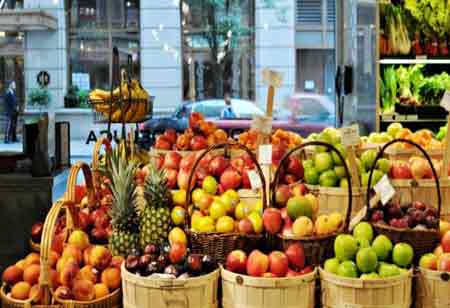Thank you for Subscribing to Food Business Review Weekly Brief
All About Food Flavorings
Artificial flavorings provide the flavor for most food and drinks they eat daily.

By
Food Business Review | Wednesday, October 11, 2023
Stay ahead of the industry with exclusive feature stories on the top companies, expert insights and the latest news delivered straight to your inbox. Subscribe today.

Flavors are incredibly complex, with dozens, if not hundreds, of molecules interacting to form the distinct flavor characteristics of each food and beverage.
Fremont, CA: Artificial flavorings provide the flavor for most food and drinks they eat daily. Most individuals need to be aware of artificial flavorings despite their importance in the modern food market.
Sweetness, saltiness, sourness, bitterness, and umami are the five unique flavors the human tongue can detect (savory). Every other component of a flavor is derived from the scent of the meal, and it is believed that over 80 percent of taste is experienced through smell. So this is where natural and synthetic chemicals enter the picture since they may be employed to change the aroma and hence the flavor of food and drink.
Flavors are incredibly complex, with dozens, if not hundreds, of molecules interacting to form the distinct flavor character of each food and beverage. Tea, for example, contains 47 different compounds that contribute to its flavor, but coffee has almost 100. On the other hand, certain flavors have a strong chemical component that, even on its own, provides a particular flavor to any dish it introduces.
Let’s look at the most common chemical compounds used in the food business, explaining where they originate from and how they're utilized in daily food and drinks.
DIACETYL
Diacetyl is a natural byproduct of fermentation that imparts a buttery aroma and flavor to foods and beverages. Diacetyl is most commonly used as the premise for artificial butter flavoring, which can be found on butter-flavored popcorn. Beta carotene, which gives margarine a yellow color, is added to make it taste more buttery.
- ISOAMYL ACETATE
Isoamyl Acetate has a strong and unique odor and makes banana and pear flavorings. Yeast spontaneously produces isoamyl acetate during fermentation. Some beers, including German and Belgian Weiss beers, benefit from the addition of isoamyl acetate, which gives the drink a desirable fruity tone.
- BENZALDEHYDE
One of the most often utilized compounds in food processing is benzaldehyde, which has a nice almond fragrance. The principal component of almond oil extract is benzaldehyde, which is used to produce an almond flavor in chocolate and baked products. It may also be derived from a variety of different natural sources, such as apricot, cherry, and laurel leaves, as well as peach seeds.
- METHYL ANTHRANILATE
The scent of Concord grapes is carried by methyl anthranilate. It mainly serves to flavor soft drinks, confectionery, and children's medication, and it imparts a unique purple color to the items it adds.
Concord grapes, jasmine, lemon, orange, strawberry, and ylang-ylang all contain methyl anthranilate. It produces the flavor of an apple when combined with ethyl acetate and ethyl butyrate, another commonly used food flavoring.






